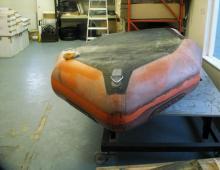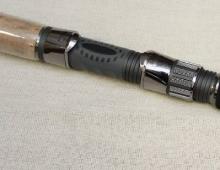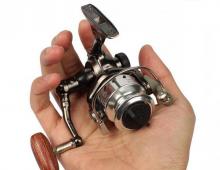How to make a feeder tackle?
Feeder gear was invented by fishermen from England, but it is worth noting that similar donks were used back in the days of the USSR by fishing enthusiasts. At the moment, everywhere on the reservoirs it is possible to meet lovers of fishing with a feeder in their hands. And the reason for such popularity was the possibility of a superficial approach to equipping the feeder. Expensive tackle will not always be the key to good fishing. It is more important to assemble the feeder part correctly, and it will become an elongated part of your arm, it will be very sensitive. Any touch to the bait you will see. At the same time, you can comfortably sit and watch the beautiful nature. Any feeder rig consists of a leash and a rig that ties it all together.
The composition of the feeder equipment
Feeder equipment consists of:
- Monofilament.
- Braided fishing line.
- Feeder rod.
- Swivel.
- Carbine.
- Crimp tube.
- Feeder or sinker.
- Bead.
- Tube (anti-twist).
- Monofilament. You will see its benefits when fishing in reservoirs with a rocky bottom or in crooked places, when a braided line can fail after several casts. A feeder with a monofilament line dampens sharp fish bites more strongly. In addition, with the well-coordinated work of the friction brake of the coil, it will not be difficult to pull out a trophy individual. We select the thickness of the monofilament fishing line for the feeder in the range of 0.20-0.30 mm.
- Braided line is durable. The lack of extensibility in some cases becomes an advantage of this type of fishing thread, and at times negatively affects fishing. The advantage of a braided feeder thread will become as sensitive as possible. But when hooking fish with tender lips, you have to make a large number of gatherings, while experienced feeders mount a rubber shock absorber in addition to the braid. For hunting for, and roach, we select a fishing line with a diameter of 0.12-0.14 mm.
- Feeder rod. The choice of rod is one of the key aspects, it must match the fishing location. The characteristics of the feeder rod depend on the fishing conditions. Suitable for fishing on small lakes, oxbow lakes or ponds. Requires a short model up to 3.3 m long. In this case, the test load indicator is selected within the limits of 20-40 g. And for river fishing, the length of the feeder rod reaches 3.9 m with a load of 80-120 g. When choosing a rod, you should pay attention to the presence of additional tips or quiver types. Between themselves, their key difference is sensitivity and flexibility, they will be needed when changing the mass of the feeder.
- feeder. One of the inseparable parts of the feeder is the feeder. "Cages" are considered standard models. Feeders come in different shapes and sizes. The main aspect of choosing the right feeder is based on the fact that its weight, together with the bait, should not exceed the maximum load limit of the rod.
- Crimp tube. With round pliers crimptubule is pressed down, thereby fixing the leash material. Crimp both ends tubules needed on different levels.
Popular feeder rigs
 Among the popular feeder equipment should be highlighted:
Among the popular feeder equipment should be highlighted:
- Asymmetrical loop. Perhaps this is the most popular equipment in feeder fishing and can be used on water bodies with any current. Asymmetry works both at short and long distances. First, you need to use a locking knot to tie a loop to which the leash will be attached in a loop-to-loop way. After that, a bend-shock absorber 5-10 cm long is wound and fixed with the same locking knot. Then a clip or just a swivel is put on the free one, while protective beads are put on both sides of it. After that, you will need to fold the two lines together so that the shoulder on which the feeder is attached is 12-15 longer and tie with the same locking knot. At the end, you can either tie a loop to which you will tie the main fishing line, or tie a swivel. Usually an asymmetrical loop is knitted 45-60 cm. The longer the loop, the more sensitive your tackle will be, but at the same time less comfortable in casting. Don't be discouraged if your first asymmetrical loop causes a lot of inconvenience during your first catch.
- A helicopter and two knots - a wonderful feeder equipment for catching carp - is used in the current, and even better in a strong current, a weak bite. The main advantage of a helicopter is the possibility of self-cutting fish. The feeder rod should be at 45 degrees to the ground with the tip pointing up. Thus, the bait, which is on a leash almost a meter from the feeder, hangs in the water column under the influence of the current. At the end of the main line, a feeder with bait is mounted, and the leash slides along it. Fish hooking comes from a sharp jerk and depends on the severity of the feeder, so most bites are sharp.
- In this rig, the feeder glides along the main line thanks to a swivel and carabiner. We restrict its movement with a stopper. The sinker in it is sliding, it can be easily removed if necessary, it is easily replaced by a light feeder. Great for carp and other white fish.
- Equipment with anti-twist. One of the simplest feeder rigs is the use of a curved anti-twist tube. The longer part of the tube should be turned towards the leash, so that when casting the equipment, take it away from the feeder. We put the anti-twist on the main fishing line, stop it, fasten the bead and tie the swivel. We mount a leash to the swivel.
 Step-by-step installation of feeder gear is done in the following 4 steps:
Step-by-step installation of feeder gear is done in the following 4 steps:
- We assemble the feeder rod by connecting all the collapsible knees (this is a composite rod), we simply lay out the telescopic rod.
- We attach a reel to the rod, open the shackle and the fishing line is threaded through all the rings, starting first from the one closest to the reel and ending with the upper part of the rod.
- We close the shackle of the line laying machine.
- At the end of the fishing line, we make a loop with a figure-eight knot, and then we attach your feeder rig (rigging) to it using the loop-to-loop method.
Most anglers who are trying to master the feeder and trying to fish are faced with the problem of choosing a rig. Properly selected equipment is the main component of the catchability of the feeder.
Leashes for catching carp on the feeder are mainly equipped with one hook, the probability of simultaneous bite of two carps is very small. But the probability of losing a trophy with two hooks is very high. Moreover, if the intensity of bites is good, then during the time that you will take out carp with two leashes, you can manage to take out two if you use a leash with one hook. In addition, the likelihood of overlaps with a single hook is significantly lower, and you do not have to unravel over and over again.
Catchable feeder equipment available to everyone
 The simplest equipment, which is used, as a rule, on reservoirs without a current and at a short distance. It has very good sensitivity, but there is a drawback, it is prone to overlaps. It makes it difficult to use it with long leashes and over long distances. To tie it, use the DRENNAN Swivel Stop Beards kit. If the rig uses DRENNAN feeders, which have an elastic line, then nothing else is needed.
The simplest equipment, which is used, as a rule, on reservoirs without a current and at a short distance. It has very good sensitivity, but there is a drawback, it is prone to overlaps. It makes it difficult to use it with long leashes and over long distances. To tie it, use the DRENNAN Swivel Stop Beards kit. If the rig uses DRENNAN feeders, which have an elastic line, then nothing else is needed.
If feeders from other manufacturers are used, then it is better to put a Middy Feeder Shock or tie it. Of course, many do not have the opportunity to use these elements, but they are easy to replace with others, so this equipment is available to any fisherman.
We make a catchy feeder tackle
The equipment is excellent, but not accessible to everyone, for its manufacture you will need silicone stoppers, beads and swivels with a clasp, you can make it yourself. This rig is with The Method feeders such as FOX Compact Carp Feeders. As with the previous equipment, there are practically no problems with this one. The only difficulty for fishermen is the lack of feeders themselves. Feeders allow you to make very long casts, in addition, models of large weight provide self-setting for carp. Thanks to its shape, they allow you to fish on the silty bottom.
Of course, many other feeder rigs can be used, as many anglers have as many opinions. And everyone has their own preferences. It is important that you do not be afraid to experiment, then the experience that you get will give you the opportunity to be with a good catch on any fishing trip.



